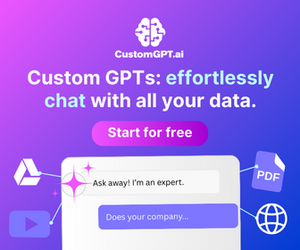-
Table of Contents
How to Successfully Implement an AI Chatbot for Customer Service

AI chatbot for customer service setup can transform how businesses interact with their customers, offering instant responses and reducing operational costs. However, many companies struggle with deployment, integration, and optimization. If you’ve been facing challenges in this area, this guide will walk you through best practices, real-world examples, and actionable insights to ensure your chatbot delivers maximum value.
Table of Contents
- Why Use Chatbots in Customer Support?
- Planning Your Chatbot Strategy
- Choosing the Right Platform
- Designing Effective Conversations
- Seamless Integration with Existing Systems
- Training and Continuous Optimization
- Measuring Success and ROI
- Avoiding Common Pitfalls
- Future Trends in AI-Powered Support
Why Use Chatbots in Customer Support?
Businesses today need fast, scalable solutions to handle growing customer inquiries. AI-driven chatbots provide 24/7 assistance, reducing wait times and improving satisfaction. For instance, IBM Watson reports that chatbots can resolve up to 80% of routine queries without human intervention.
Key benefits include:
- Cost efficiency: Automating responses cuts labor costs by up to 30%.
- Improved response time: Customers get instant answers, boosting satisfaction.
- Scalability: Handle thousands of queries simultaneously during peak hours.
Planning Your Chatbot Strategy
Before diving into AI chatbot for customer service setup, define clear objectives. Ask yourself:
- What problems should the chatbot solve?
- Which customer segments will benefit most?
- How will it complement human agents?
For example, Sephora’s chatbot increased bookings for in-store makeovers by 11% by focusing on personalized recommendations. Start small, then expand based on data insights.
Choosing the Right Platform
Not all chatbot platforms are equal. Evaluate options like Dialogflow, Zendesk Answer Bot, or custom solutions. Consider:
- Ease of integration with your CRM or helpdesk.
- Natural language processing (NLP) capabilities.
- Scalability for future needs.
Designing Effective Conversations
A well-designed conversational AI should feel natural. Use these tips:
- Keep responses concise and actionable.
- Incorporate fallback options for misunderstood queries.
- Personalize interactions using customer data.
For inspiration, check out our guide on improving customer engagement.
Seamless Integration with Existing Systems
Integrating your AI chatbot for customer service setup with tools like Salesforce or Shopify ensures a unified experience. For instance, Domino’s Pizza integrated its chatbot with order tracking, reducing delivery-related queries by 25%.
Steps for smooth integration:
- Use APIs to connect with databases and CRM systems.
- Test extensively to avoid disruptions.
- Train staff on handoff protocols for complex issues.
Training and Continuous Optimization
Your chatbot improves over time. Leverage machine learning to refine responses based on user interactions. Additionally, analyze chat logs to identify gaps.
Key optimization strategies:
- Regularly update the knowledge base.
- Monitor sentiment analysis to gauge satisfaction.
- A/B test different conversation flows.
Learn more in our article on AI training best practices.
Measuring Success and ROI
Track KPIs like resolution rate, customer satisfaction (CSAT), and cost savings. According to Gartner, companies using chatbots see a 70% improvement in query handling efficiency.
Essential metrics:
- First-contact resolution (FCR).
- Average handling time (AHT).
- User retention rates.
Avoiding Common Pitfalls
Many businesses fail due to poor planning or over-automation. Avoid these mistakes:
- Neglecting human oversight for complex issues.



Leave a Reply